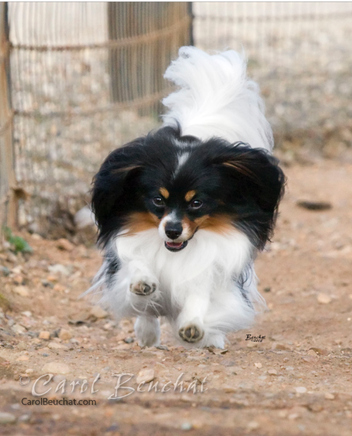Somebody told me the other day that their group was thinking about making a rule prohibiting breedings that would produce COI > 10%, because they heard that 10% was the threshold of the "extinction vortex". She asked me if I thought this was a good idea.
This 10% extinction vortex statement is one of those pithy statements.
I advised her that breeders should NOT make a rule about this. Not because it's not true, but because "it's complicated."
| First, with the tools we currently have, inbreeding can only be estimated. From a pedigree database, we can only get an estimate for a litter, not for individual animals. This is because a COI calculated from pedigree information is based on the genetic relatedness of the parents. All puppies in a litter have the same parents, but each will inherit different genes from each parent so will have a different actual level of inbreeding. The pedigree COI is an estimate of the average inbreeding expected for a litter, but the actual inbreeding for each individual can be higher or lower than that average. For that reason alone, it would be silly to declare 10% as a hard cutoff for breedings. Second, inbreeding is only one of many things breeders should consider when making breeding decisions. Animals not bred are effectively removed from the gene pool, and a smaller gene pool, as well as fewer breeding animals, will result in a higher rate of inbreeding in the population - which is the very thing you were trying to avoid. You might be better off producing litters with higher inbreeding than strictly abiding by a rule that could result in negative consequences over the longer term. |
There are other things to consider in making breeding decisions such as the carrier status of an animal for a known genetic mutation, or the balance of males and females in the population that are bred. In any breed,, there might be many issues that are critical to consider because of their potential longer-term impact on the genetics of the breed.
It's great that breeders are beginning to consider aspects of genetic management like the the risk of getting sucked into the extinction vortex as inbreeding increases above 10%. But beware of reducing what should be a complex set of genetic considerations to a simple rule. There is much more to consider, and the more you learn, the more you will realize how dangerous it is to make complicated decisions based on a pithy statement.
Check out ICB's course "COI Bootcamp"
*** Visit our Facebook pages ***
ICB Institute of Canine Biology
...the latest canine news and research
ICB Breeding for the Future
...the science of animal breeding


